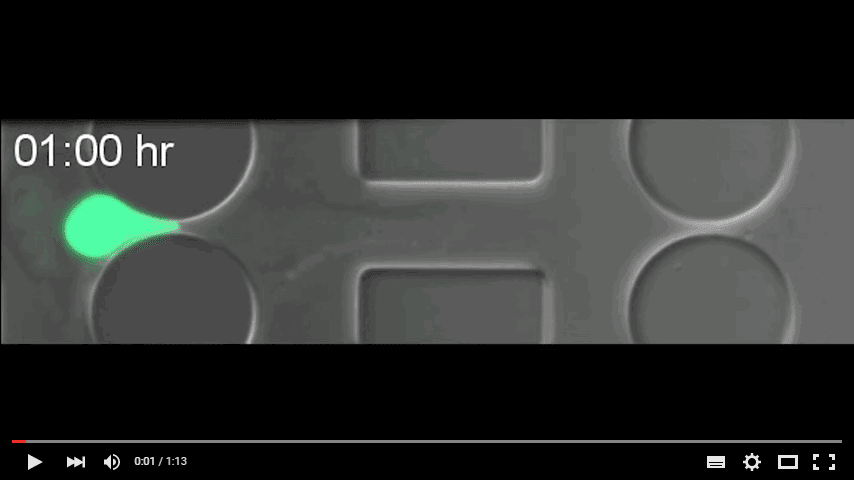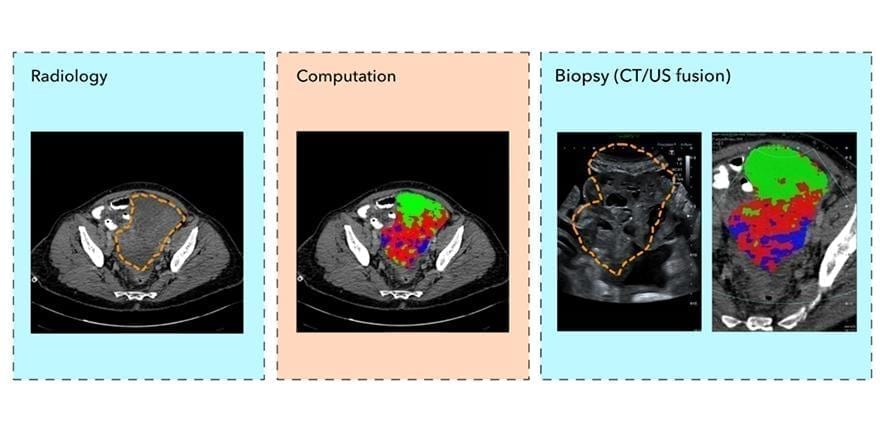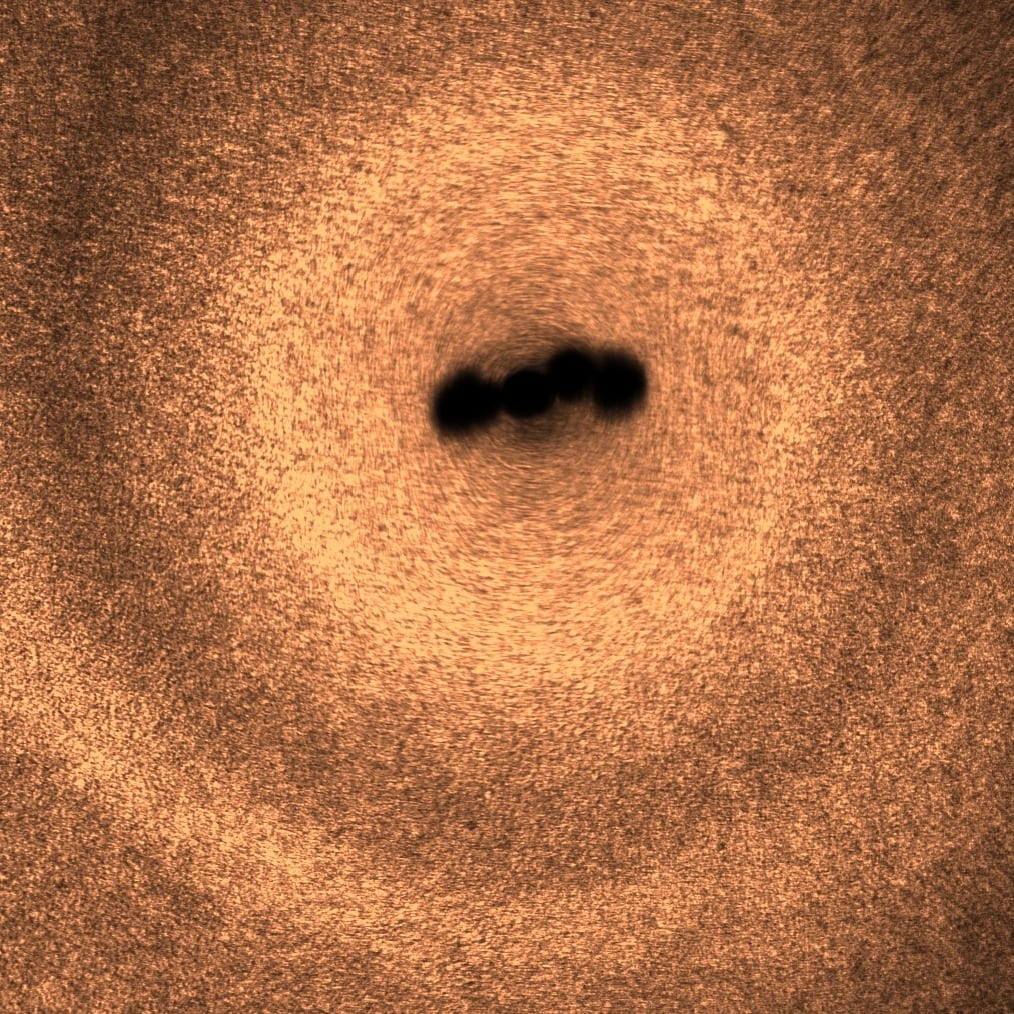
via Cornell University
With narrow bodies and no collarbones, mice are able to squeeze through holes as small as a quarter-inch in diameter.
Cancer cells similarly are able to migrate through extremely tight quarters but with a major difference: The journey often comes at a price – the deformation and, in some cases, rupture of the outer lining of a cell’s nucleus. While deformation and rupture can sometimes lead to cell death, the cell – about 90 percent of the time – also has the ability to repair itself.
A research group headed by Jan Lammerding, associate professor of biomedical engineering at Cornell University, has been studying this phenomenon in hope of using it to develop both treatment and diagnostic solutions for the millions of people who deal with cancer every day.
There is also the possibility that a ruptured cell could mutate into a more aggressive form of the disease.
“You have so many migrating cells,” Lammerding said, “that even if a small fraction of them picks up a mutation, it means the cancer is evolving. The good part is, this rupturing also makes the cancer cell vulnerable. Most cells in the body stay in place, and it’s presumably mostly cancer cells that are moving around. So if we can block the mechanisms that allow them to repair themselves, then we potentially could target metastatic cancer cells.”
The group looked at two factors in the cell’s migration process: the rupturing of the nuclear envelope, which they tracked using green and red fluorescent proteins normally localized to the cell nuclei, but that spill into the cell body when the nucleus ruptures; and damage to the cell’s DNA.
“We’re still trying to find out if there are differences between cells, and a lot of what we see is very similar between normal cells and cancer cells,” he said, adding that by trying to identify potentially unique deformation-and-repair properties of cancer cells, treatments that are minimally deleterious to healthy cells may be developed.
“Now that we kind of know what we’re looking for, now that we know the molecular pathways that these work in,” he said, “could we then specifically target invasive cancer cells and not have the sledgehammer that hits everything?”
Learn more: Self-repairing cancer cells future of cancer treatments
The Latest on: Self-repairing cancer cells
[google_news title=”” keyword=”self-repairing cancer cells” num_posts=”10″ blurb_length=”0″ show_thumb=”left”]
via Google News
The Latest on: Self-repairing cancer cells
- Skin Cancer: Why Are Men More Likely To Die From Melanoma Than Women?on April 27, 2024 at 3:55 am
Melanoma or skin cancer can affect both men and women However men are said to be more likely to succumb to the diseases Read to know why ...
- John Cleese is spending thousands on stem cell therapy – is it really the secret to anti-ageing?on April 24, 2024 at 9:59 pm
The procedure in question is stem cell therapy, a treatment that the Monty Python star undergoes every 12 to 18 months. “These cells travel around the body and when they discover a place that needs ...
- Cancer treatment: What is stem cell therapy, and how does it work?on April 24, 2024 at 7:16 am
Stem cell therapy is a potentially effective way to treat cancer by using stem cells to restore or repair damaged tissues. It is possible to guide the targeting of stem cells towards cancer cells ...
- Book Review: A New Chapter in the Quest for a Longer Lifeon April 19, 2024 at 12:53 am
In “Why We Die,” biologist and Nobel laureate Venki Ramakrishnan explores the science of aging and life extension.
- Discovery of DNA repair mechanism advances understanding of how human cells stay healthyon April 16, 2024 at 5:01 pm
Normal cells use the nuclear envelope tubules to repair DNA, but cancer cells appear to need them more. To explore the mechanism's potential impact, the team analyzed data representing over 8,500 ...
- I Was Tanning-Obsessed When I Was Younger…. Did I Doom Myself to Skin Cancer?on April 8, 2024 at 5:00 pm
We know you know by now: Sun exposure can damage your skin and potentially cause cancer ... repair that DNA damage—but prolonged and/or excessive sun exposure ups the chances that your cells ...
- AACR: Breast Cancers Have DNA Repair Crutch Kicked Away by Saruparibon April 8, 2024 at 5:00 pm
For cancers that harbor gene mutations that weaken DNA repair, poly-ADP ribose polymerase ... were presented at the American Association for Cancer Research (AACR) Annual Meeting 2024 by Timothy ...
- Division of Cancer Biologyon February 27, 2024 at 11:44 am
Groups within the division are researching a wide variety of aspects of biology implicated in the origin and growth of cancer, including DNA replication and repair, cell division, signalling, ...
- How much alcohol should you be drinking in your 50s?on November 8, 2023 at 5:18 am
Blotting out uncomfortable emotions with drink is never a solution, and we need to talk them through and find healthy alternatives to self ... a cancer-causing compound. When our body breaks down ...
- Cancer cells shrink or super-size to surviveon January 25, 2023 at 11:53 pm
In contrast, the larger NRAS-mutant cancer cells contained damage to their DNA instead of repairing it, accumulating mutations and enlarging. These larger cells were not as reliant on DNA repair ...
via Bing News










